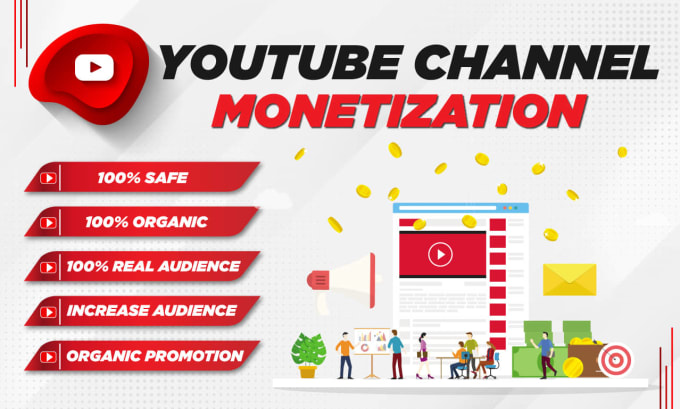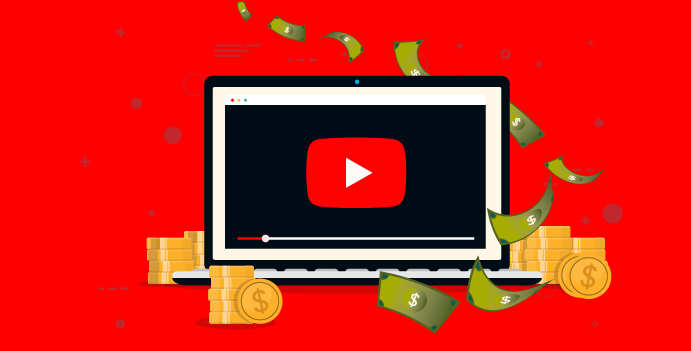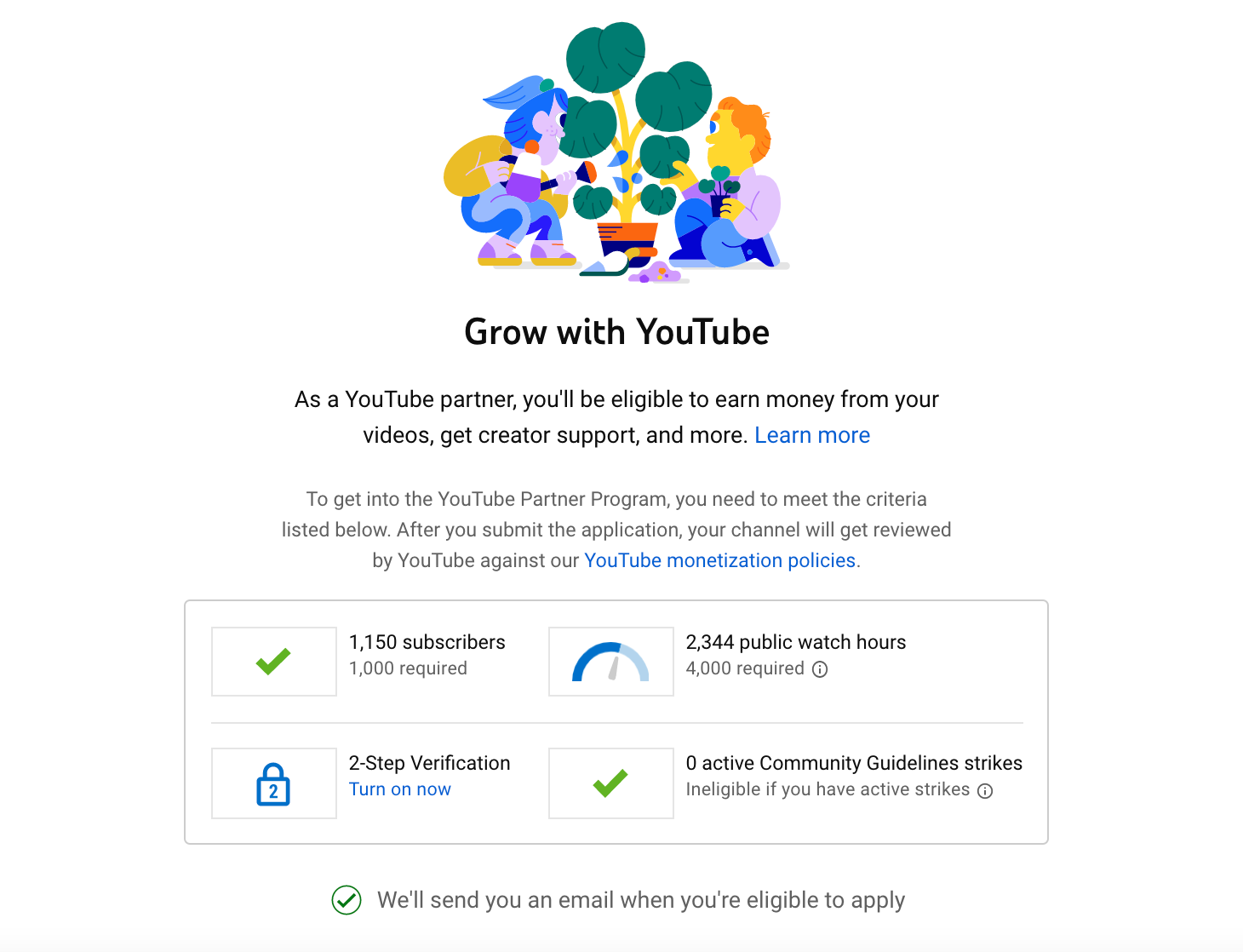Ever stumbled upon a YouTube channel and wondered how they make money? You're not alone! Determining if a YouTube channel is monetized can be a bit tricky, especially with all the changes in the platform. In this guide, we'll delve into how to recognize a monetized channel, the process behind
Understanding YouTube Monetization

YouTube monetization is essentially the way creators earn money from their videos. It sounds straightforward, but there's a lot more to it! Here’s a deep dive into what you need to know:
1. Who Can Monetize?
To start earning money on YouTube, creators must join the YouTube Partner Program (YPP). Here are the basic requirements:
- Have at least 1,000 subscribers.
- Achieve 4,000 watch hours in the past 12 months.
- Live in a country or region where the YPP is available.
- Follow all of YouTube's policies and guidelines.
2. Types of Monetization
YouTube offers several ways for creators to monetize their channels, including:
- Ad Revenue: The most common form, where ads played during the video generate income for the creator.
- Channel Memberships: Users can support creators monthly for special perks.
- Super Chat: Viewers can pay to have their messages highlighted during live streams.
- Merchandise Shelf: Allows creators to sell merchandise directly on their channel.
In summary, understanding these key elements of YouTube monetization enhances your ability to identify a monetized channel, just as it opens the door for creators to earn a living doing what they love. Exciting, right?
3. Checking Channel Details

When you're trying to figure out if a YouTube channel is monetized, the best place to start is by checking its channel details. YouTube has made it relatively easy to access this information, and it can give you some valuable insights into whether a channel is making money. Here's how you can check:
- Visit the Channel Page: Navigate to the YouTube channel you want to investigate. This is the first step that sets you on the right path.
- About Section: Click on the ‘About’ tab on the channel's main page. Here, you'll find various details, including the date the channel was created, its description, links to social media, and more.
- Subscriber Count: Look for the number of subscribers. While having a high subscriber count often indicates a monetization possibility, it's not the sole factor.
- Channel Links: Check if the channel has links to merchandise or Patreon accounts, which suggests they might be earning money in some way.
- Upload Frequency: Assess how regularly videos are uploaded. Channels that are consistently uploading content may be monetized to support their creation efforts.
While these details won't give you a definitive answer about monetization, they can offer important clues about the channel's standing and potential revenue-generating activities.
4. Signs of Monetization

Understanding the signs of monetization is key to determining whether a YouTube channel is raking in some income. There are several indicators that can give you a pretty good idea about a channel's monetized status. Here’s what to look for:
- Ads Before Videos: If you notice ads playing before a channel's videos, it's a surefire sign that they are monetized. Channels that are part of the YouTube Partner Program can enable ads.
- Sponsored Content: Pay attention to any mentions of sponsorships. If a channel integrates brands or products into their videos, this often means they are monetizing their audience.
- Memberships: Some channels offer channel memberships that allow subscribers to pay a monthly fee for exclusive perks. Seeing this on a channel can be a solid sign of monetization.
- Super Chats: You might spot Super Chats during live streams. This feature allows viewers to pay money to have their messages highlighted, indicating the channel earns from interactions.
- Merchandise Promotions: Look for links to their merchandise. Many creators promote their own products, which is a great way to monetize their brand.
By keeping an eye on these signs, you'll become adept at spotting monetized channels and understanding how they generate income. It's a fun exploration into the world of YouTube!
5. Using Third-Party Tools
When diving into the world of YouTube channels, one might wonder how to check if a channel is monetized without guessing or relying solely on visible ads. This is where third-party tools come into play! These handy platforms can provide you with valuable insights into a channel’s performance, including whether it's earning money. Here are a few popular tools you might consider:
- Social Blade:
- NoxInfluencer:
- Vidooly:
This website offers an easy way to track YouTube channel statistics. Simply input the channel name, and you’ll get a wealth of information, including estimated earnings and subscriber growth. While it won’t directly tell you if the channel is monetized, consistent revenue estimates suggest that monetization is likely.
This tool does a great job at providing channel analytics, income estimates, and even video performance metrics. It's particularly useful for evaluating the financial potential of a YouTube channel over time.
Vidooly specializes in video analytics, allowing content creators and marketers to optimize their channels. It also provides insights into ad revenue, which can indicate monetization status.
Using these tools not only saves you time but also gives you a clearer picture of a channel’s earning capabilities. Just remember, while these figures are solid estimates, they might not be 100% accurate because of the various ways creators earn money.
6. Conclusion
In the vast and ever-evolving landscape of YouTube, determining if a channel is monetized can seem like a daunting task. However, armed with the right knowledge and tools, you can navigate this process with ease. Here’s a quick recap of the main points:
- Look for ads: Check if the channel regularly features ads before and during videos.
- Join their community: Engage with comments or social media to glean more information about their revenue streams.
- Check subscriber count and view metrics: Channels with substantial followers and views are likely to be monetized.
- Utilize third-party tools: Sites like Social Blade and NoxInfluencer can provide estimated earnings and insights.
Keep in mind that monetization is just one aspect of a YouTube channel’s success. Many creators focus on building a community, producing quality content, or even exploring sponsorship opportunities that might not rely on ad revenue. So, whether you're a viewer, a creator, or someone interested in the business side of things, understanding these elements can enrich your YouTube experience. Happy exploring!










